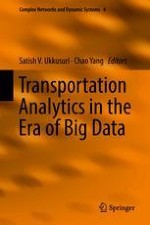
2019 | OriginalPaper | Chapter
1. Beyond Geotagged Tweets: Exploring the Geolocalisation of Tweets for Transportation Applications
Authors : Jorge David Gonzalez Paule, Yeran Sun, Piyushimita (Vonu) Thakuriah
Published in: Transportation Analytics in the Era of Big Data
Publisher: Springer International Publishing
Activate our intelligent search to find suitable subject content or patents.
Select sections of text to find matching patents with Artificial Intelligence. powered by
Select sections of text to find additional relevant content using AI-assisted search. powered by